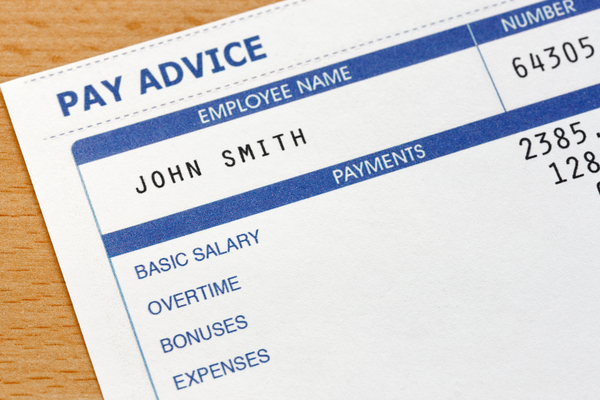
Taking control of your tax office reporting
The lead up to end of financial year is always frantic.
Businesses are in a mad scramble to get their BAS completed, PAYG reports finalised and GST totted up.
As the new financial year commences the chances are, your office probably looks like a volcano that just erupted paper!
Helping businesses is our passion and so we understand and sympathise. Here’s a complete guide to the minefield of PAYG and other business tax obligations.
Understanding PAYG and STP
PAYG (Pay as you go) is what’s known as a withholding tax. Chances are, if you have a small business with one or more salaried employees you’ll have to participate in PAYG. There’s two kinds of PAYG which you’ll encounter and it’s important to understand that they are different:
PAYG Withholding: When you pay employees and some contractors, you need to withhold a certain amount of their pay and sent it to the ATO. This is a legal requirement. The reason for this withholding tax is that you pay your employee’s or contractors tax obligations for them. This means they’re not lumped with a massive tax at the end of the year.

How do I know if I have to do PAYG withholding?
To work out whether or not you have a withholding obligation, check if the following applies:
- You employ people and they are on a fixed salary or hourly wage rate. You employ contractors and both of you have made a voluntary agreement to withhold amounts from your payments to them (for instance so they can make super contributions).
- You make payments to businesses or contractors that do not use their ABN or ACN

PAYG Income Tax Installments
This is where you pay incremental amounts in advance to the ATO which add up to what your expected end of year income tax liability will be. The ATO will assess the amounts based on the last Tax return lodged .
What is STP (single touch payroll)?
This is a new reporting change that the ATO brought in and applies from 1st July 2018. If your business has 20 or more employees then you will have to start using it.
It will also be rolled out to businesses with 19 employees or less, on 1st July 2019. The reporting is providing the ATO with the tax and super information each time you pay your employees. You will most likely need to have some form of payroll software that’s preferably cloud based. ATB can help identify what’s right for you and also assist in setting them up.
STP means that you report to the ATO every time you pay your employees. It doesn’t matter when your pay cycle is – whether it’s weekly or monthly or fortnightly. The reporting happens whenever you process the payment.
Paying super
Compulsory super has been in the workforce for a long time now. As an employer you are obligated to pay your workers superannuation.. This kicks in if they earn $450 or more before tax each calendar month. The minimum you have to pay is 9.5% which is called the Super Guarantee (SG) . You must report all super payments and keep electronic records. You need to pay the super at least four times a calendar year. You also need to make sure the super is paid into a complying fund. Given the hefty work involved in STP and SG – if you are still using a manual pay process you should consider changing.
Payroll tax
Payroll tax is state based and not under the PAYG system. However you’ll still need to consider it come tax time. A word of warning: if you operate in multiple states need to lodge multiple monthly wages data. Pay roll tax is paid on things like: wages, allowances, bonuses, commissions, fringe benefits, termination payments and super. Check with us to see what your obligations are.
Minimise the pain
These multiple, and sometimes complex tax and payroll obligations can really be a headache. They are very time consuming and lead to mountains of paperwork. This is something we can help you with so you can get on with what you do best. We’d recommend investigating sophisticated cloud-based software that can quickly do this for you. We can help you set it up and recommend the right software to suit your particular business.

PAYG tips and tricks
We understand that business activity statements and annual PAYG reports are a necessary pain that cause stress and take up time. Here are our tips on how best to manage them:
1) Make sure your PAYG report checks out
Your annual PAYG report is the summary of all the payments you’ve made to your employees.
The report you generate is used to determine what your PAYG taxation is. Make sure that all the employee details are correct, such as: start and finish date; their tax file number and their address and their gross wage and any allowances they may have. You’re relying on the employees to give you some of this information. But if anything goes wrong the onus will be on you. So reconcile all your accounts and payroll data with what’s being reported.
2) Be careful with changing your PAYG installments
The PAYG installments system is one way of paying regular amounts toward your expected annual liability. The ATO will determine if you need to make regular payments. The general rule is that if your business is making over $4000 in gross income each financial year you’ll have to pay installments. There are exceptions of course, which you can find on the ATO’s site. But because every business fluctuates, there will be some years when your business either expands or gets smaller makes profits or makes losses. You may then want to change the income tax installment. However there’s a big word of caution here – if you alter the amount to a lesser figure (projecting that you will have less PAYG) but end up with an outstanding income tax amount, the ATO may impose fines or penalties. This is an area we can help you with and advise you on whether or not to vary the amount.
3) Lodge early, prepare early
It’s important to get your BAS and PAYG in on time to the ATO. BAS can either be due monthly or quarterly. Monthly BAS is due on the 21st of each month. Quarterly BAS is due on the 28th of each month after that quarter. So a quarter ending in March would mean you have until 28th April to lodge. In the December quarter however you don’t have to lodge BAS till the 28th February. It’s easy to overlook BAS or leave it till the last minute. Especially as there are so many different lodgment dates depending on your circumstances, its easy to get caught out. It’s known as the “instant insomniac pill” as it can lead to many sleepless nights by small business owners, up all hours to get their BAS in. Setting up a calendar or using cloud based accounting software with scheduled reminders will help you. If you don’t pay your BAS in time you can be fined. The ATO is currently focusing heavily on tax fraud. It’s worth noting that if you’re using an accountant you get an extra month to lodge your BAS. Very handy!
4) Cloud software can help you
Two words guaranteed to strike fear and exhaustion into any small business owner are ‘data entry’. Unfortunately data entry is utterly necessary when keeping your books. We all know how manual data entry is prone to mistakes that could be costly. This is where a strong cloud based platforms is your friend. We love xero but there are other good products there on the market and they have become highly sophisticated tools.
Cloud based software can also help tally up GST, fringe benefits, categorise your accounts and keep a running record of where your PAYG and general income is. Cloud based accounting software will also help you stay on top of important lodgement dates. As mentioned earlier we can recommend the right kind of powerful software to suit your needs.
5) Reconcile your BAS to your accounting figures
It’s critical that everything adds up and that your business is compliant. That what’s in the BAS matches your accounting. If your BAS is submitted and has incorrect data or information, that was a genuine error, you can be penalised with interest on the unpaid tax. If however, the mistake was deliberately trying to mislead or even carelessness or poor book keeping be charged a penalty based on a percentage of the outstanding amount.

How we can help
BAS and PAYG reports are highly complex. As we’ve pointed out the penalties for mistakes and errors in what your business reports back to the ATO are heavy.
There’s intricate detailed bookkeeping required as well as a deep understanding of your particular obligations.
We provide all that and can also help you get the maximum deductions. We have expertise in knowing what the Tax office requirements are.
We are passionate about helping business to succeed. So by preparing all your BAS and PAYG obligations we take the heavy lifting off you allowing you to concentrate on your core business – your business!
Guide on when to report BAS:
Monthly
- You report GST each month if:
- Your business’s annual turnover is over $20 million
- You’ve opted to lodge GST each month
- Your income tax year does not end 30 June (other than charitable institutions)
- Your business is required to report PAYG monthly if:
- its withholding is more than $25,000 but less than $1 million
- its withholding is more than $1 million (fortnightly)
You can report BAS monthly usually on the 21st day of each month. You report BAS if you are registered for GST.
Quarterly
You report GST quarterly if:
– your business’s annual turnover is less than $20 million.
You report PAYG withholding quarterly if;
– your business has an annual withholding of less than $25 000
You report PAYG installments
– every quarter regardless of how much your turnover is.
You can report BAS quarterly on the 28th of the month after the quarter. So, if your quarter is July, August and September you lodge your BAS on the 28th of October. The only exception is the October, November and December quarter, where you’re given until 28th February to lodge.
Annually
– You report GST annually only if you are voluntarily registered for GST and your GST turnover is under $75,000 ($150,000 for not-for-profit bodies).
Important to remember
Don’t forget if you use an agent or accountant to lodge tour BAS for you, you are given one month’s extra grace by the ATO.
